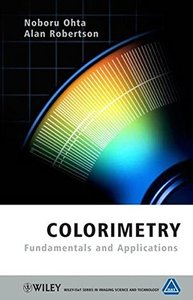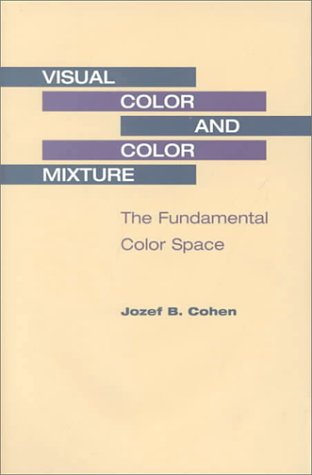買這商品的人也買了...
-
 物件導向設計模式 (Design Patterns)(平裝版)
物件導向設計模式 (Design Patterns)(平裝版)$520$442 -
 Microsoft Windows Server 2003 系統實務
Microsoft Windows Server 2003 系統實務$780$616 -
 Linux 入門與應用程式設計實務
Linux 入門與應用程式設計實務$520$411 -
 $1,080Windows System Programming, 3/e (Hardcover)
$1,080Windows System Programming, 3/e (Hardcover) -
 Reversing: Secrets of Reverse Engineering (Paperback)
Reversing: Secrets of Reverse Engineering (Paperback)$1,300$1,235 -
 Introduction to Color Imaging Science (Hardcover)
Introduction to Color Imaging Science (Hardcover)$7,770$7,382 -
 Excel 2003 實力養成暨評量
Excel 2003 實力養成暨評量$350$277 -
 深入淺出 Java 程式設計, 2/e (Head First Java, 2/e)
深入淺出 Java 程式設計, 2/e (Head First Java, 2/e)$880$695 -
 最新 C++ 程式語言
最新 C++ 程式語言$560$504 -
 CSS 功能索引式參考手冊
CSS 功能索引式參考手冊$390$308 -
 軟體預先架構之美學 (Prefactoring)
軟體預先架構之美學 (Prefactoring)$580$458 -
 Introduction to Probability(平裝)
Introduction to Probability(平裝)$1,400$1,372 -
 SQL Server 2005 資料庫開發聖經
SQL Server 2005 資料庫開發聖經$890$757 -
 如何設計好網站 (Don't Make Me Think: A Common Sense Approach to Web Usability, 2/e)
如何設計好網站 (Don't Make Me Think: A Common Sense Approach to Web Usability, 2/e)$450$383 -
 鳥哥的 Linux 私房菜基礎學習篇, 2/e
鳥哥的 Linux 私房菜基礎學習篇, 2/e$780$663 -
 Microsoft SQL Server 2005 設計實務
Microsoft SQL Server 2005 設計實務$680$537 -
 ASP.NET 2.0 深度剖析範例集
ASP.NET 2.0 深度剖析範例集$650$507 -
 UML 精華第三版-增訂嵌入式系統與工作流程概念 (UML Distilled, 3/e)
UML 精華第三版-增訂嵌入式系統與工作流程概念 (UML Distilled, 3/e)$480$379 -
 Ajax 技術手冊 (Foundations of Ajax)
Ajax 技術手冊 (Foundations of Ajax)$450$356 -
![A Practitioner's Guide to Software Test Design [Hardcover]-cover](https://cf-assets2.tenlong.com.tw/products/images/000/031/009/medium/514pvIfMFGL.jpg?1525626154) A Practitioner's Guide to Software Test Design [Hardcover]
A Practitioner's Guide to Software Test Design [Hardcover]$3,370$3,202 -
 C++ Primer, 4/e (中文版)
C++ Primer, 4/e (中文版)$990$891 -
 Pro/ENGINEER Wildfire 4.0 綜合教材 基礎入門
Pro/ENGINEER Wildfire 4.0 綜合教材 基礎入門$460$363 -
 $1,120Hands-On Ethical Hacking and Network Defense (Paperback)
$1,120Hands-On Ethical Hacking and Network Defense (Paperback) -
 強勢回歸 Microsoft Hyper-V 2012 從零開始-複本、叢集、即時移轉、高可用性 (附教學影片)
強勢回歸 Microsoft Hyper-V 2012 從零開始-複本、叢集、即時移轉、高可用性 (附教學影片)$680$544 -
 $1,890Interconnecting Cisco Network Devices, Part 1 (ICND1) Foundation Learning Guide, 4/e (Hardcover)
$1,890Interconnecting Cisco Network Devices, Part 1 (ICND1) Foundation Learning Guide, 4/e (Hardcover)
相關主題
商品描述
Description
Colorimetry, the science of quantitvely describing color, is essential for color reproduction technology. This is because it creates standards by which to measure color, using mathematical techniques and software to ensure fidelity across media, allow accurate color mixing, and to develop color optimization.
This book is a comprehensive and thorough introduction to colorimetry, taking the reader from basic concepts through to a variety of industrial applications. Set out in clear, easy-to-follow terminology, Ohta and Robertson explain fundamental principles such as color specification, the CIE (International Commission on Illumination) system, and color vision and appearance models. They also cover the following topics:
- the optimization of color reproduction;
- uniform color spaces and color difference formulae, including the CIEDE 2000 formula;
- applications of metamerism, chromatic adaptation, color appearance and color rendering;
- mathematical formulae for calculating color mixing, maximising luminous efficacy, and designing illuminants with specific properties.
Colorimetry: Fundamentals and Applications is an ideal reference for practising color engineers, color scientists and imaging professionals working on color systems. It is also a practical guide for senior undergraduate and graduate students who want to acquire knowledge in the field.
Table of Contents
About the Authors.
Series Preface.
Preface.
Introduction.
1. Light, Vision and Photometry.
1.1 Light.
1.2 Mechanism of the Human Eye.
1.3 Adaptation and Responsivity of the Human Eye.
1.4 Spectral Responsivity and the Standard Photometric Observer.
1.5 Definition of Photometric Quantities.
1.6 Photometric Units.
1.7 Calculation and Measurement of Photometric Quantities.
1.8 Relations Between Photometric Quantities.
Note 1.1 Luminous Exitance, Illuminance, and Luminance of a Perfect Diffusing Plane Light Source.
Note 1.2 Luminance and Brightness.
2. Color Vision and Color Specification Systems.
2.1 Mechanism of Color Vision.
2.2 Chemistry of Color Vision.
2.3 Color Specification and Terminology.
2.4 Munsell Color System.
2.5 Color System Using Additive Color Mixing.
Note 2.1 Colorfulness, Chroma and Saturation.
3. CIE Standard Colorimetric System.
3.1 RGB Color Specification System.
3.2 Conversion into XYZ Color Specification System.
3.3 X10Y10Z10 Color Specification System.
3.4 Tristimulus Values and Chromaticity Coordinates.
3.5 Metamerism.
3.6 Dominant Wavelength and Purity.
3.7 Color Temperature and Correlated Color Temperature.
3.8 Illuminants and Light Sources.
3.9 Standard and Supplementary Illuminants.
Note 3.1 Derivation of Color Matching Functions from Guild and Wright’s Results.
Note 3.2 Conversion between Color Specification Systems.
Note 3.3 Conversion into XYZ Color Specification System.
Note 3.4 Imaginary Colors [X] and [Z].
Note 3.5 Photometric Quantities in the X10Y10Z10 Color System.
Note 3.6 Origin of the Term ‘Metamerism’.
Note 3.7 Simple Methods for Obtaining Correlated Color Temperature.
Note 3.8 Color Temperature Conversion Filter.
Note 3.9 Spectral Distribution of Black-body Radiation.
4. Uniform Color Spaces.
4.1 Uniform Chromaticity Diagrams.
4.2 Uniform Lightness Scales (ULS).
4.3 CIE Uniform Color Spaces.
4.4 Correlates of Perceived Attributes.
4.5 Comparing CIELAB and CIELUV Color Spaces.
4.6 Conversion of Color Difference.
4.7 Color Difference Equations Based on CIELAB.
Note 4.1 Calculation of Munsell Value V from Luminous Reflectance Y.
Note 4.2 Modified CIELAB and CIELUV Equations for Dark Colors.
Note 4.3 Other Color Difference Formulas.
Note 4.4 Direct Calculation of Hue Difference ΔH*.
5. Measurement and Calculation of Colorimetric Values.
5.1 Direct Measurement of Tristimulus Values.
5.2 Spectral Colorimetry.
5.3 Geometrical Conditions for Measurement.
5.4 Calculation of Colorimetric Values.
5.5 Colorimetric Values in CIELAB and CIELUV Uniform Color Spaces.
Note 5.1 Spectral Colorimetry of Fluorescent Materials.
Note 5.2 Reference Standard for Reflection Measurements.
6. Evolution of CIE Standard Colorimetric System.
6.1 Additive Mixing.
6.2 Subtractive Mixing.
6.3 Maximum Value of Luminous Efficacy and Optimal Colors.
6.4 Chromatic Adaptation Process.
6.5 von Kries’ Predictive Equation for Chromatic Adaptation.
6.6 CIE Predictive Equations for Chromatic Adaptation.
6.7 Color Vision Models.
6.8 Color Appearance Models.
6.9 Analysis of Metamerism.
Note 6.1 Color Mixing Rule.
Note 6.2 Lambert–Beer Law.
Note 6.3 Method for Calculating the Maximum Value of the Luminous Efficacy of Radiation.
Note 6.4 Method for Calculating Optimal Colors.
Note 6.5 Method for Obtaining Fundamental Spectral Responsivities.
Note 6.6 Deducing von Kries’ Predictive Equation for Chromatic Adaptation.
Note 6.7 Application of von Kries’ Equation for Chromatic Adaptation.
Note 6.8 Application of CIE 1994 Chromatic Adaptation Transform.
Note 6.9 Theoretical Limits for Deviation from Metamerism.
7. Application of CIE Standard Colorimetric System.
7.1 Evaluation of the Color Rendering Properties of Light Sources.
7.2 Evaluation of the Spectral Distribution of Daylight Simulators.
7.3 Evaluation of Whiteness.
7.4 Evaluation of Degree of Metamerism for Change of Illuminant.
7.5 Evaluation of Degree of Metamerism for Change of Observer.
7.6 Designing Spectral Distributions of Illuminants.
7.7 Computer Color Matching.
Note 7.1 Computation Method for Prescribed Spectral Distributions.
Appendix I: Basic Units and Terms.
AI.1 SI Units.
AI.2 Prefixes for SI Units.
AI.3 Fundamental Constants.
AI.4 Greek Letters.
Appendix II: Matrix Algebra.
AII.1 Addition and Subtraction of Matrices.
AII.2 Multiplication of Matrices.
AII.3 Inverse Matrix.
AII.4 Transpose Matrix.
Appendix III: Partial Derivatives.
Appendix IV: Tables.
References.
Bibliography.
Index.
商品描述(中文翻譯)
**描述**
色彩學是定量描述顏色的科學,對於顏色再現技術至關重要。這是因為它創建了測量顏色的標準,使用數學技術和軟體來確保在不同媒介中的忠實度,允許準確的顏色混合,並發展顏色優化。
本書是對色彩學的全面且徹底的介紹,帶領讀者從基本概念到各種工業應用。Ohta 和 Robertson 以清晰、易於理解的術語解釋了基本原則,如顏色規範、CIE(國際照明委員會)系統,以及顏色視覺和外觀模型。他們還涵蓋了以下主題:
- 顏色再現的優化;
- 均勻顏色空間和顏色差公式,包括 CIEDE 2000 公式;
- 同色異譜現象、色彩適應、顏色外觀和顏色再現的應用;
- 計算顏色混合的數學公式、最大化光效和設計具有特定屬性的光源。
*《色彩學:基礎與應用》* 是從事顏色系統工作的色彩工程師、色彩科學家和影像專業人士的理想參考書。它也是希望在該領域獲得知識的高年級本科生和研究生的實用指南。
**目錄**
關於作者。
系列前言。
前言。
引言。
**1. 光、視覺與光度學。**
1.1 光。
1.2 人眼的機制。
1.3 人眼的適應性和反應性。
1.4 光譜反應性和標準光度觀察者。
1.5 光度量的定義。
1.6 光度單位。
1.7 光度量的計算和測量。
1.8 光度量之間的關係。
註 1.1 完美擴散平面光源的光通量、照度和亮度。
註 1.2 亮度與明亮度。
**2. 色彩視覺與顏色規範系統。**
2.1 色彩視覺的機制。
2.2 色彩視覺的化學。
2.3 顏色規範和術語。
2.4 Munsell 顏色系統。
2.5 使用加色混合的顏色系統。
註 2.1 色彩度、色度和飽和度。
**3. CIE 標準色彩計量系統。**
3.1 *RGB* 顏色規範系統。
3.2 轉換為 *XYZ* 顏色規範系統。
3.3 X10Y10Z10 顏色規範系統。
3.4 三刺激值和色度坐標。
3.5 同色異譜現象。
3.6 主導波長和純度。
3.7 色溫和相關色溫。
3.8 照明體和光源。
3.9 標準和補充照明體。
註 3.1 根據 Guild 和 Wright 的結果推導顏色匹配函數。
註 3.2 顏色規範系統之間的轉換。
註 3.3 轉換為 *XYZ* 顏色規範系統。
註 3.4 想像顏色 [X] 和 [Z]。
註 3.5 X10Y10Z10 顏色系統中的光度量。
註 3.6 “同色異譜現象”一詞的起源。
註 3.7 獲得相關色溫的簡單方法。
註 3.8 色溫轉換濾光片。
註 3.9 黑體輻射的光譜分佈。
**4. 均勻顏色空間。**
4.1 均勻色度圖。
4.2 均勻亮度尺度(ULS)。
4.3 CIE 均勻顏色空間。
4.4 感知屬性的相關性。
4.5 比較 CIELAB 和 CIELUV 顏色空間。
4.6 顏色差的轉換。
4.7 基於 CIELAB 的顏色差方程。
註 4.1 從光度反射率 Y 計算 Munsell 值 V。
註 4.2 用於深色的修改 CIELAB 和 CIELUV 方程。
註 4.3 其他顏色差公式。
註 4.4 顏色差 ΔH* 的直接計算。
**5. 顏色計量值的測量與計算。**
5.1 三刺激值的直接測量。
5.2 光譜色彩計量學。
5.3 測量的幾何條件。
5.4 顏色計量值的計算。
5.5 CIELAB 和 CIELUV 均勻顏色空間中的顏色計量值。
註 5.1 螢光材料的光譜色彩計量學。
註 5.2 反射測量的參考標準。
**6. CIE 標準色彩計量系統的演變。**
6.1 加色混合。
6.2 減色混合。
6.3 光效的最大值和最佳顏色。
6.4 色彩適應過程。
6.5 von Kries 的色彩適應預測方程。
6.6 CIE 色彩適應的預測方程。
6.7 色彩視覺模型。
6.8 顏色外觀模型。
6.9 同色異譜現象的分析。
註 6.1 顏色混合規則。
註 6.2 Lambert–Beer 法則。
註 6.3 計算輻射光效最大值的方法。
註 6.4 計算最佳顏色的方法。
註 6.5 獲得基本光譜反應性的的方法。
註 6.6 推導 von Kries 的色彩適應預測方程。
註 6.7 應用 von Kries 的色彩適應方程。
註 6.8 應用 CIE 1994 色彩適應變換。
註 6.9 偏離同色異譜現象的理論極限。
**7. CIE 標準色彩計量系統的應用。**
7.1 評估光源的顏色再現特性。
7.2 評估日光模擬器的光譜分佈。
7.3 評估白度。
7.4 評估照明變化的同色異譜現象程度。
7.5 評估觀察者變化的同色異譜現象程度。
7.6 設計照明體的光譜分佈。
7.7 電腦顏色匹配。
註 7.1 規定光譜分佈的計算方法。
**附錄 I:基本單位和術語。**
AI.1 SI 單位。
AI.2 SI 單位的前綴。
AI.3 基本常數。
AI.4 希臘字母。
**附錄 II:矩陣代數。**
AII.1 矩陣的加法和減法。
AII.2 矩陣的乘法。
AII.3 逆矩陣。
AII.4 轉置矩陣。
**附錄 III:偏導數。**
**附錄 IV:表格。**
參考文獻。
書目。
索引。


























![Engineering Mechanics: Statics & Dynamics, 5/e [Hardcover]-cover](https://cf-assets2.tenlong.com.tw/products/images/000/072/799/medium/51_cjMxuUrL.jpg?1528198524)




